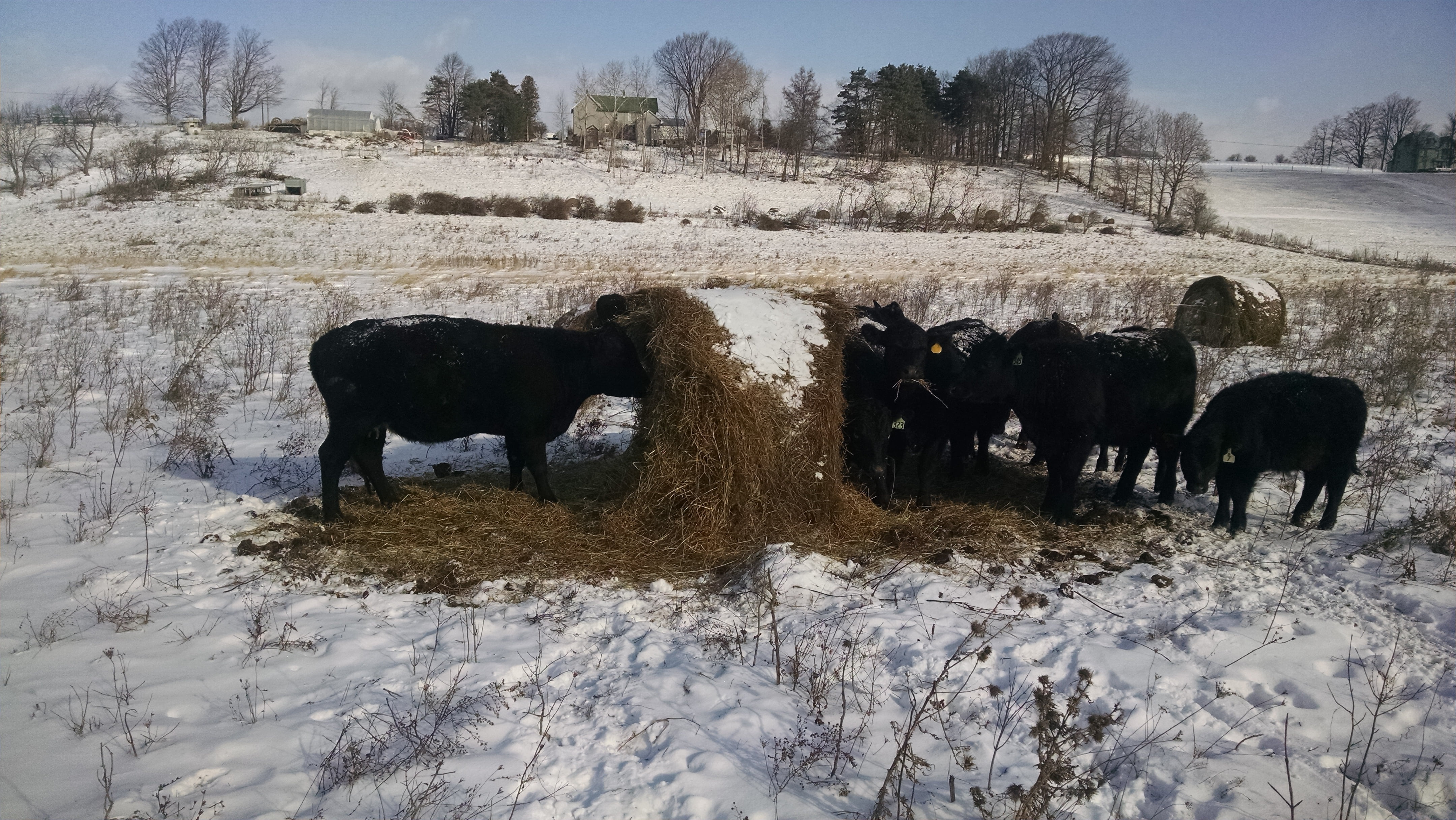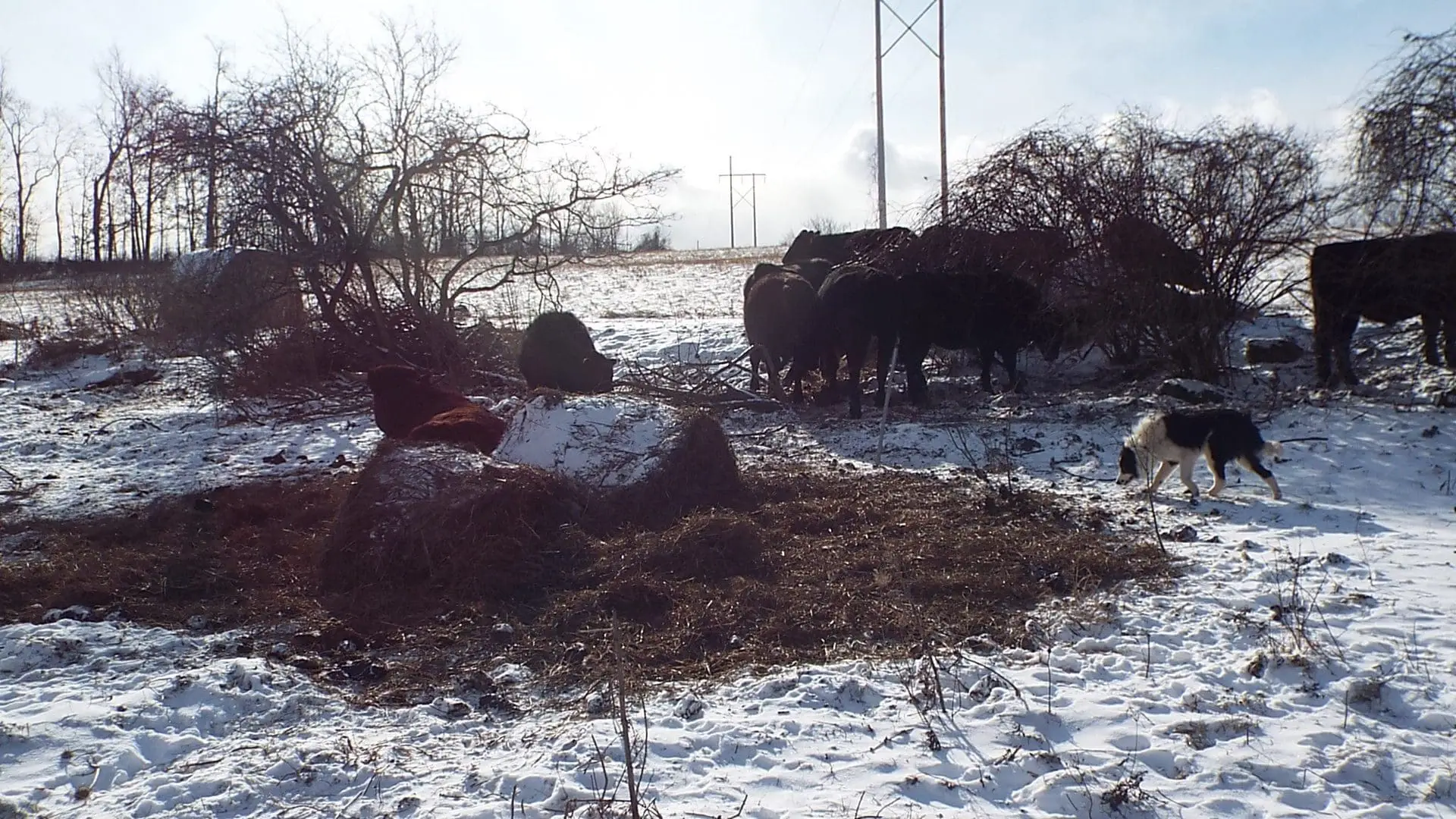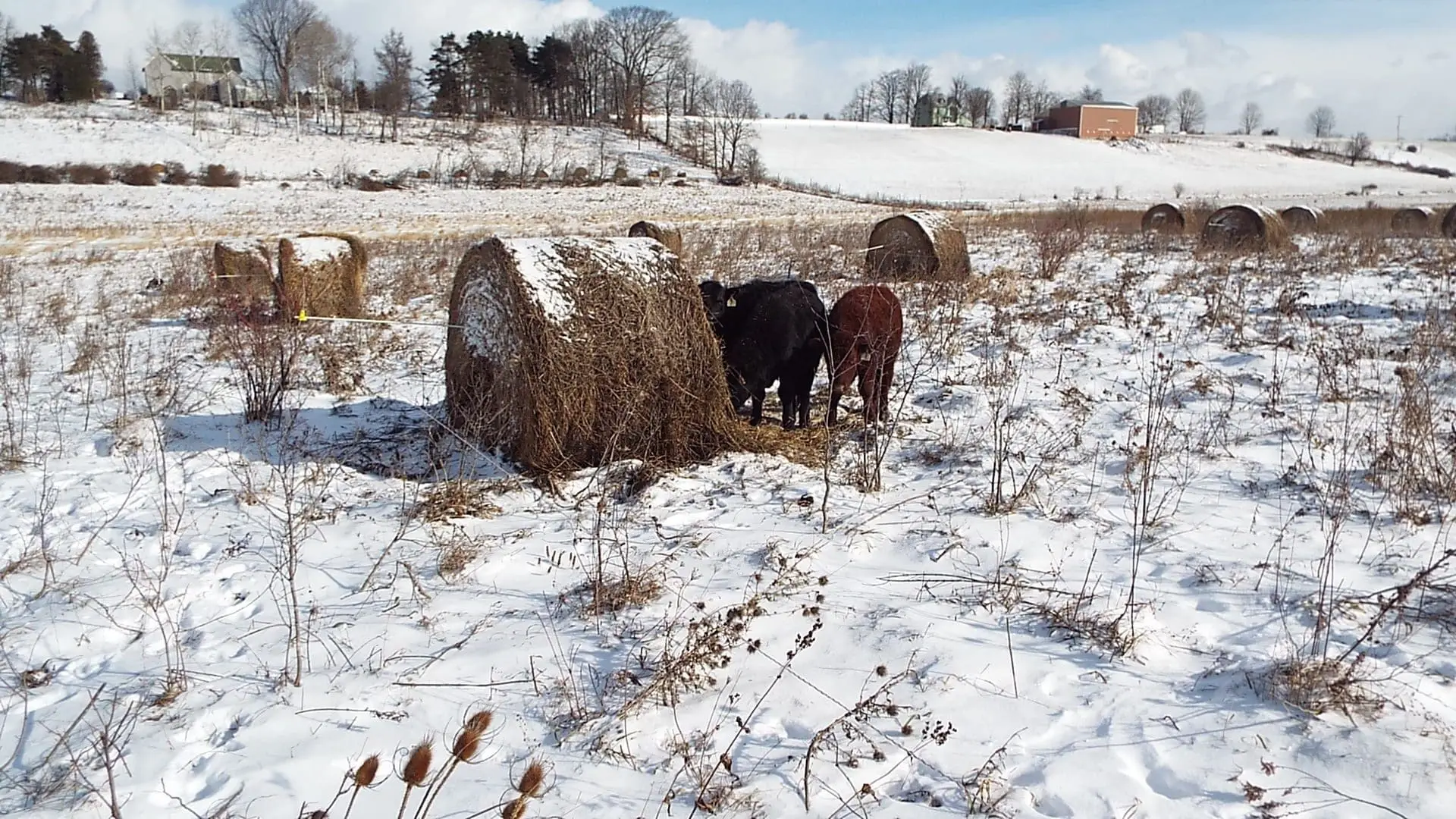This is our third winter bale grazing the cattle on pasture. The idea is simple — fence off hay bales with portable electric fences and as the cattle eat through bales, roll fences back every few days to expose new feed. There are different ways of looking at the economics of bale grazing versus winter yarding or barn feeding. There are situations in which either one might make more sense than the other. In our situation, bale grazing makes the most sense since it requires almost no infrastructure (buildings, concrete pads, permanent fencing), no winter tractor work, and no manure spreading. It allows us to place cattle in different fields in different winters, thus concentrating the manure in places that need the fertility the most.

We have found that dairy cattle don’t gain much weight bale grazing in cold weather, so this year we only kept the stockiest dairy steers with our herd. The beef cattle do just fine. Their shaggy winter coats and thicker hides keep them well insulated. There is a higher waste factor in bale grazing versus using hay feeders, since a lot of the hay gets trampled. In our case, we’re dealing with pretty stemmy hay, so the waste is higher than what it would be if we had better hay. But the wasted hay isn’t an absolute loss, since it provides an insulating bed for the cattle to rest on rather than standing in snow (or mud). And so long as the hay is coming from a different farm, it represents a source of imported fertility once it breaks down.

The calves are still small enough that they slip under the electric fences. We don’t mind this. It actually serves as a kind of “creep feeding”, where the calves can cherry pick the best hay ahead of the rest of the herd.


2 thoughts on “Bale Grazing 2015”
I’m in Ohio and I’ve been bale grazing beef cattle and it works. You save money, time and it makes you money. Take a look at write up I just put on my blog at http://sustainablelivingandagriculture.blogspot.com/
We’ve been happy with the results. Like all livestock management decisions, bale grazing is an imperfect solution to a challenging problem. We’d like to figure out how to reduce hay feeding, but that’s a tall order in this climate.